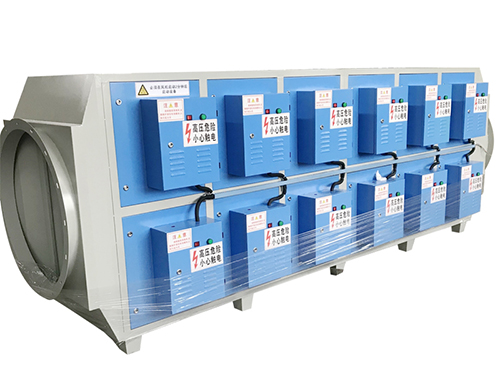SURVIVAL THROUGH QUALITY
PRODUCT CENTER
-
Pulse dust collector
-
Mine dust collector
-
Boiler dust collector
-
Metallurgical dust collector
-
Carbon plant dust collector
-
Chemical dust collector
-
Rubber dust collector
-
Woodworking dust collector
-
Single machine dust collector
-
Static electricity Dust collector
-
Cyclone dust collector
-
Wet dust collector
-
Filter cartridge dust collector
-
Insert valve (gate valve)
-
Ventilation butterfly valve (cold air valve)
-
Spiral conveyor (auger)
-
Scraper conveyor
-
Dust humidifier
-
Bucket elevator
-
Ash discharge valve
-
Material Handling Equipment
-
Wet scrubber
-
Dust collector
-
Dust removal filter bag
-
Dust removal bag cage
-
Polishing platform
-
Waste gas treatment equipment
-
Electric control cabinet
-
Fan
-
Smoke welding machine
-
Liquid level switch
-
Dust removal filter element
-
Aeration cushion
-
Sweeper
-
Dust suppression device
-
Solenoid valve

Plasmacluster Ion Generator
A plasma generator is a device that artificially obtains plasma. Plasma generated naturally is called natural plasma (such as aurora borealis and lightning), while artificially generated plasma is called laboratory plasma. Laboratory plasma is generated in a limited volume plasma generator. High frequency plasma torches have been widely used in industry, especially in plasma chemistry, metallurgy, and optical material purification. It can also prepare superconducting materials, such as reducing chloride vapors of vanadium silicon (or vanadium germanium) and niobium aluminum (or niobium germanium) using hydrogen high-frequency plasma to prepare superconducting materials. There are many titanium ores, vanadium containing slag, phosphate ores, and industrial refractory waste containing rare materials that need to be processed in Chinese metallurgical and mining enterprises. The use of high-frequency plasma torches is a promising smelting method, which can extract useful metals and rare elements from them.
The power output range of the high-frequency plasma generator is 0.5-1 megawatts, with an efficiency of 50-75%. The center temperature of the discharge chamber is generally as high as 7000-10000 kilowatts.
A low-pressure plasma generator is a low-pressure gas discharge device that generally consists of three parts: a power source that generates plasma, a discharge chamber, a vacuum pumping system, and a working gas (or reaction gas) supply system. There are usually four types: static discharge devices (Figure 5a), high-voltage corona discharge devices (Figure 5b), high-frequency (radio frequency) discharge devices (there are three types, Figure 5c), and microwave discharge devices (Figure 5d). Place the treated solid surface or the substrate surface that requires a polymer film layer in a discharge environment and treat it with plasma. Due to the fact that low-pressure plasma is a cold plasma, when the pressure is around 133-13.3 Pa, the electron temperature can reach up to 10000 K, while the gas temperature is only 300 K, which not only does not burn the substrate, but also has enough energy for surface treatment. Low pressure plasma generators have been increasingly used in surface treatment processes such as plasma polymerization, film preparation, etching, and cleaning. Successful examples include the use of Freon plasma dry corrosion in semiconductor manufacturing processes and the generation of titanium nitride films on metal surfaces using ion plating. Since the 1970s, the surface treatment and modification technology of non-metallic solids (such as glass, textiles, plastics, etc.) using low-pressure plasma has also developed rapidly.

